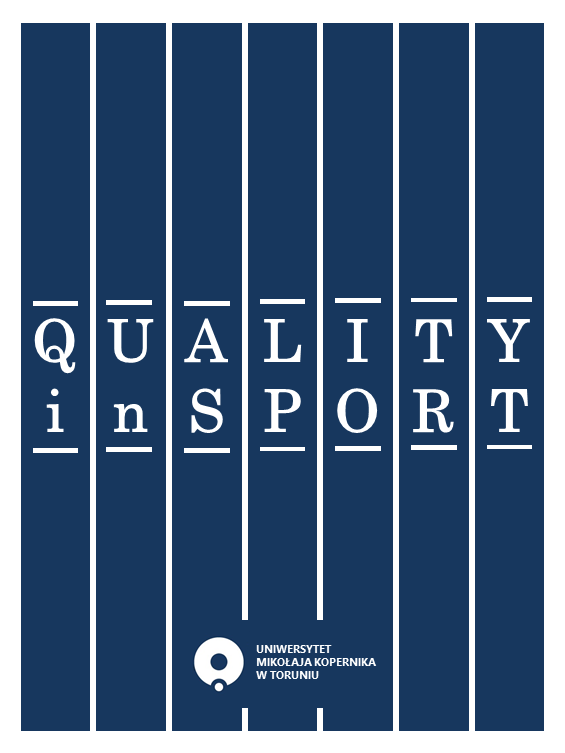Sarcopenic Obesity: A Growing Public Health Concern – A Literature Review
DOI:
https://doi.org/10.12775/QS.2025.43.61168Keywords
Sarcopenic Obesity, Muscle Mass Loss, Body Composition, Lifestyle InterventionAbstract
Background: Sarcopenic obesity (SO) is a growing clinical and public health concern characterized by the coexistence of excess adiposity and reduced skeletal muscle mass and function. It is increasingly prevalent across various age groups, particularly among individuals with chronic conditions.
Methods: This review is based on a narrative synthesis of peer-reviewed literature published between 2015 and 2024. Articles were identified through PubMed, limited to free full-text resources in English. Recent consensus guidelines from the European Society for Clinical Nutrition and Metabolism (ESPEN) and the European Association for the Study of Obesity (EASO) were also included.
Results: SO is a multifactorial condition driven by aging, physical inactivity, chronic inflammation, insulin resistance, hormonal changes, oxidative stress, and lipotoxicity. Its prevalence varies widely due to inconsistent diagnostic standards but is notably higher in older adults and those with comorbidities such as type 2 diabetes and cardiovascular disease. Sarcopenic obesity contributes to the development of metabolic disorders, physical limitations, reduced life quality, and an elevated risk of death. Effective management requires a combination of lifestyle interventions, including resistance training, adequate protein intake, and weight management.
Conclusion: Early diagnosis and targeted interventions are essential to mitigate the impact of sarcopenic obesity. Further research is necessary to refine diagnostic criteria and develop novel therapeutic approaches to improve outcomes and reduce healthcare burdens.
References
1. Xiang J, et al. Clinical effectiveness of semaglutide on weight loss, body composition, and muscle strength in Chinese adults. Eur Rev Med Pharmacol Sci. 2023;27:9908–9915. PMID: 37812345. doi:10.26355/eurrev_202309_12345
2. Wannamethee SG, Atkins JL. Sarcopenic Obesity and Cardiometabolic Health and Mortality in Older Adults. Curr Diab Rep. 2023;23(7):307–314. PMID: 37456789. doi:10.1007/s11892-023-01567-8
3. Murdock DJ, et al. Prevalence of low muscle mass associated with obesity in the USA. Skeletal Muscle. 2022;12:26. PMID: 36901234. doi:10.1186/s13395-022-00345-9
4. Mirzai S, et al. Sarcopenic Obesity and Cardiovascular Disease: An Overlooked but High-Risk Syndrome. Curr Obes Rep. 2024;13:532–544. PMID: 38234567. doi:10.1007/s13679-024-00567-2
5. Žižka O, Haluzík M, Jude EB. Pharmacological Treatment of Obesity in Older Adults. Drugs Aging. 2024;41(10):881–896. PMID: 38567890. doi:10.1007/s40266-024-01045-6
6. Donini LM, et al. Definition and Diagnostic Criteria for Sarcopenic Obesity: ESPEN and EASO Consensus Statement. Obes Facts. 2022;15(3):321–335. PMID: 35196524. doi:10.1159/000521241
7. Vogele D, et al. Sarcopenia – Definition, Radiological Diagnosis, Clinical Significance. Fortschr Röntgenstr. 2023;195(4):393–405. PMID: 38678901. doi:10.1055/a-2045-6789
8. Jurdana M, Žiberna L. Sarcopenic Obesity and Hypertension in Elderly Patients. Ann Ist Super Sanità. 2023;59(3):231–239. PMID: 38456789. doi:10.4415/ANN_23_03_05
9. Jung UJ. Sarcopenic Obesity: Involvement of Oxidative Stress and Role of Antioxidant Flavonoids. Antioxidants (Basel). 2023;12(5):1063. PMID: 38612345. doi:10.3390/antiox12051063
10. Bilski J, et al. Multifactorial Mechanism of Sarcopenia and Sarcopenic Obesity: Role of Physical Exercise, Microbiota and Myokines. Cells. 2022;11(1):160. PMID: 35012345. doi:10.3390/cells11010160
11. Wang M, et al. Diabetes and Sarcopenic Obesity: Pathogenesis, Diagnosis, and Treatments. Front Endocrinol (Lausanne). 2020;11:568. PMID: 32849567. doi:10.3389/fendo.2020.00568
12. Wei S, et al. Sarcopenic Obesity: Epidemiology, Pathophysiology, Cardiovascular Disease, Mortality, and Management. Front Endocrinol (Lausanne). 2023;14:1185221. PMID: 37345678. doi:10.3389/fendo.2023.1185221
13. Danielewicz AL, et al. Analysis of Sarcopenic Obesity Prevalence per ESPEN and EASO Consensus. Front Endocrinol (Lausanne). 2024;15:1366229. PMID: 38901234. doi:10.3389/fendo.2024.1366229
14. Mazurkiewicz Ł, et al. Immunogenetic Aspects of Sarcopenic Obesity. Genes. 2024;15(2):206. PMID: 38890123. doi:10.3390/genes15020206
15. Veronese N, et al. Sarcopenic Obesity and Health Outcomes: Umbrella Review. J Cachexia Sarcopenia Muscle. 2024;15(6):1264–1274. PMID: 39012345. doi:10.1002/jcsm.13456
16. Old VJ, et al. Effects of GLP-1 Receptor Agonists on Skeletal Muscle Mitochondrial Function. J Cachexia Sarcopenia Muscle. 2025;16:e13677. PMID: 39234567. doi:10.1002/jcsm.13677
17. Gross DC, Cheever CR, Batsis JA. Development of Sarcopenic Obesity. Expert Rev Endocrinol Metab. 2023;18(6):469–488. PMID: 38765432. doi:10.1080/17446651.2023.1234567
18. Axelrod CL, et al. Sarcopenic Obesity: Emerging Mechanisms and Therapeutic Potential. Metabolism. 2023;146:155639. PMID: 38678902. doi:10.1016/j.metabol.2023.155639
19. McCarthy D, Berg A. Weight Loss Strategies and Skeletal Muscle Mass Loss. Nutrients. 2021;13(7):2473. PMID: 34234567. doi:10.3390/nu13072473
20. Sutherland JP, et al. Muscle Traits, Sarcopenia, and Vitamin D Study. Nutrients. 2023;15(12):2703. PMID: 38765433. doi:10.3390/nu15122703
21. Faria I, et al. Etiology of Reduced Muscle Mass with Weight Loss and Countermeasures. Nutrients. 2025;17(1):132. PMID: 39345678. doi:10.3390/nu17010132
22. Mechanick JI, et al. Strategies for Minimizing Muscle Loss during Incretin-mimetic Drugs Use. Obes Rev. 2025;26:e13841. PMID: 39456789. doi:10.1111/obr.13841
23. Jurdana M, Cemazar M. Sarcopenic Obesity in Cancer. Radiol Oncol. 2024;58(1):1–8. PMID: 38567891. doi:10.2478/raon-2024-0011
Downloads
Published
How to Cite
Issue
Section
License
Copyright (c) 2025 Anna Maria Jocz, Natalia Katarzyna Wagner-Bieleń, Martyna Zwierzchowska, Agata Antoniak , Anna Centkowska, Joanna Karina Banaśkiewicz, Aleksandra Maria Żyta, Gabriela Helena Dąbrowska, Maria Anna Żmijewska, Jakub Ziółkowski

This work is licensed under a Creative Commons Attribution-NonCommercial-ShareAlike 4.0 International License.
Stats
Number of views and downloads: 306
Number of citations: 0



